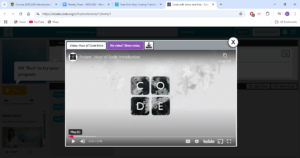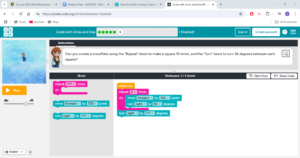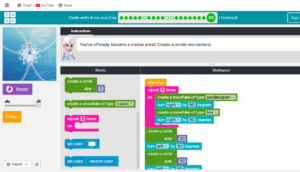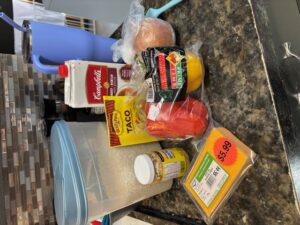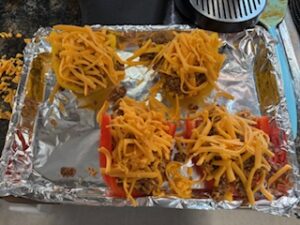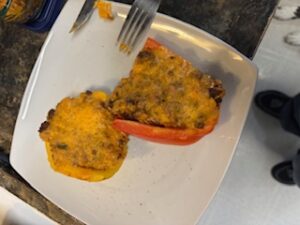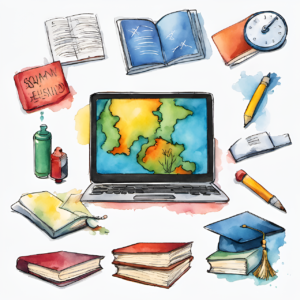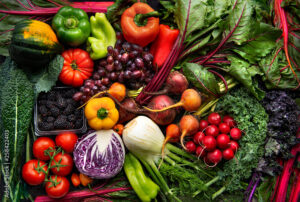I’m a little behind in my learning project posts, so apologies. This week, I decided to make a lasagna because I was craving some pasta, as I was entirely restricted from eating it for the past little while. At the beginning of this process, I will have to admit I was wondering how to properly layer a lasagna. I have made this dish before, but I have always wondered, do the noodles go first, or the sauce? I mean, I am sure it all tastes the same in the end, but I literally searched on YouTube “how to layer lasagna.” So, after getting the confirmation, I needed to know on how to prepare this dish correctly. I then gathered my ingredients.
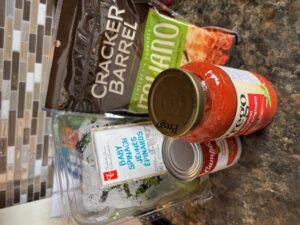 What I did not include in this is the ground beef cooking on the stove. But I got the Prego brand of sauce, seeing that they do not make the brand I usually use anymore, so this was new. I honestly do not mind it, but I find that many sauces taste so different. Nonetheless, this one was okay. I cooked the ground beef and added the sauce in, let that simmer and then I got my lasagna noodles ready to be cooked. I cooked those to “al dente” and then I looked up my trusty layering video one more time just to make sure I was going to do it correctly. I layered my lasagna with meat sauce first, some cheese, and spinach and then noodles, and repeated the steps three more times, until my sauce had ran out!
What I did not include in this is the ground beef cooking on the stove. But I got the Prego brand of sauce, seeing that they do not make the brand I usually use anymore, so this was new. I honestly do not mind it, but I find that many sauces taste so different. Nonetheless, this one was okay. I cooked the ground beef and added the sauce in, let that simmer and then I got my lasagna noodles ready to be cooked. I cooked those to “al dente” and then I looked up my trusty layering video one more time just to make sure I was going to do it correctly. I layered my lasagna with meat sauce first, some cheese, and spinach and then noodles, and repeated the steps three more times, until my sauce had ran out! 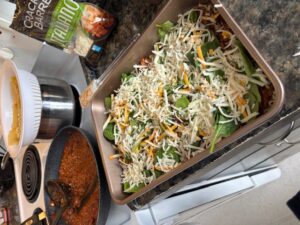
I also was unsure how the spinach was going to go over, as I have not used it in my lasagna before, but hey we are all about trying new things right? Anyhow I let that cook in the oven for about an hour at 250 degrees. Once it was all done the cheese was stretchy and very delicious. I wanted to try the Italiano cheese due to my grandma using it before and it has a different flavor, rather than just old plain cheddar. I would love to experiment a little more with lasagna, and maybe add some ricotta cheese, or cottage cheese, but we will just do baby steps for right now.
Big Finale!
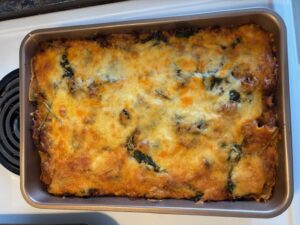
The final product was nothing short of delicious, even with spinach. Which in all honesty did not have a ton of taste, but added the iron we needed. I had more than half of the dish be leftovers, but this dish is very good even the day after!
